Intro
Looking for a Beginner's Telescope? Let us help You!
Chapter 1
Chapter 2
Chapter 3
Now you need to mount your scope!
Chapter 4
Accessorise, Accesorise (with eyepieces and filters)
Chapter 5
Chapter 6
Caring and Collimating your Telescope
Chapter 7
Solar Observations and a How-To guide on making a solar filter

Buying your first telescope is a big step, especially for a beginner. If you have been browsing around the telescope markets, chances are, you must have come across terms such as Newtonian Reflector, Maksutov Cassegrain, Schmidt Cassegrain, and many more! So, what do they mean? Are they really that different from each other? What should a beginner go for? If you have any of these questions running through your mind, then stick around.
Types of Telescopes
Telescopes have been around since the 1600s, and since then, they have been through a lot of design changes. These design changes are more than just aesthetic improvements, each design brings something new to the table while refining the manufacturing process. Nowadays, all telescopes fall within three major types, which are: Refractors, Reflectors, and Catadioptric telescopes. Within those three types are many different hybrid designs and variations. Let’s start with the Refractor telescope.
REFRACTOR TELESCOPE
A refractor telescope has a long tube with a large objective lens at the front and an eyepiece at the back. Light passes through the curved objective lens along a single path where it converges at the back of the telescope tube. An eyepiece at the back of the telescope is used to flatten and focus the light at the exit pupil of the eyepiece to form a viewable image.
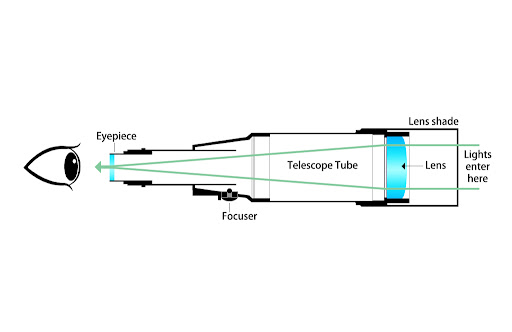
The drawbacks to refractor telescopes are the higher cost of producing a high transmission glass lens, and chromatic aberration/colour fringing along the edges of objects. Chromatic aberration occurs when different wavelengths of light travel at different speeds as they pass through the curved lens of the telescope. To counter this issue, some refractors will utilize special sets of lenses to adjust the different wavelengths into a more focused image.
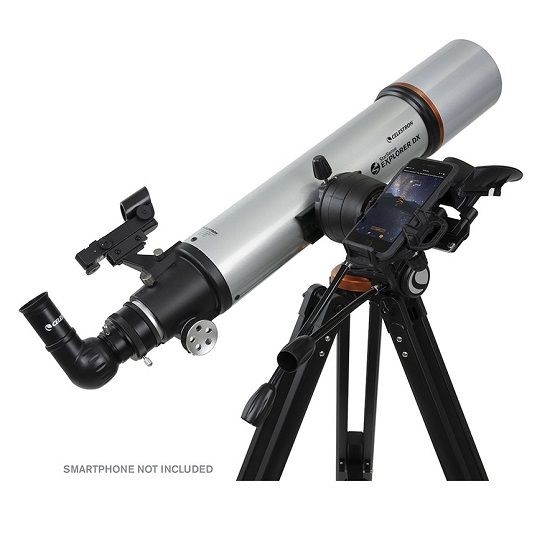
Celestron StarSense Explorer DX 102AZ Refractor Telescope
REFLECTOR TELESCOPE
Reflectors are much more cost-effective than refractors, eliminating the need for a large glass lens. Light traveling down the telescope tube is reflected by a large primary mirror onto a secondary mirror near the front of the telescope. The light is then directed through an eyepiece on the side of the telescope tube. One of the most common forms of reflectors is the Newtonian reflector. As explained previously, reflectors mainly use mirrors which are easier to manufacture compared to glass lenses used in refractor telescopes. Because of this, they are known to be the most efficient design compared to the other types of telescopes with the same aperture size.
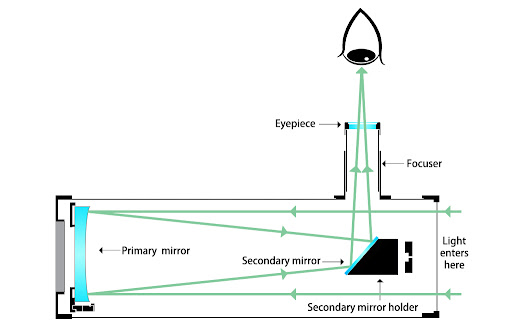
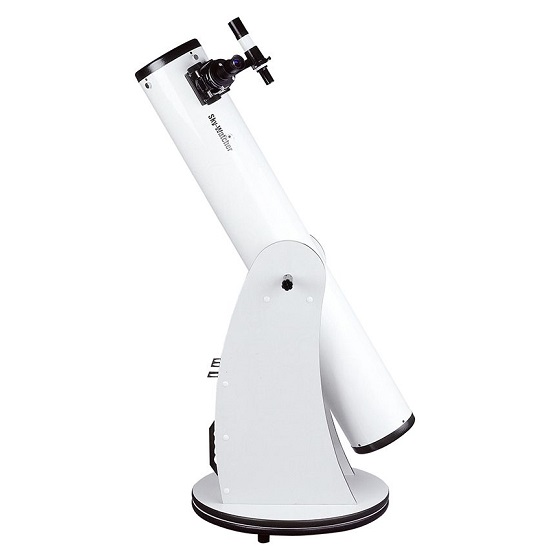
SkyWatcher 6" Dobsonian Telescope
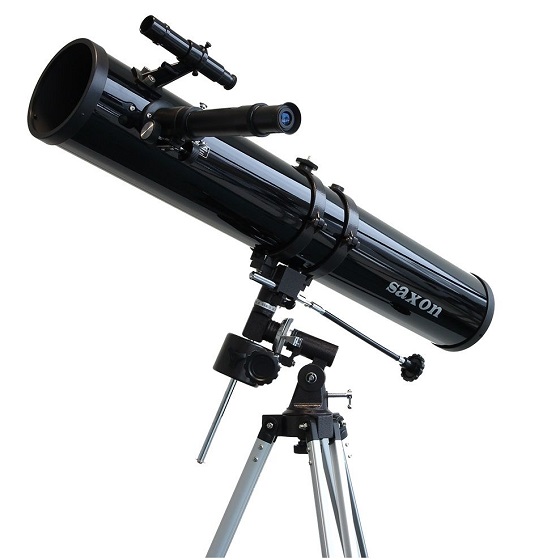
Saxon 114/900 EQ Newtonian Reflector Telescope
The last type of telescope is the catadioptric or compound telescope which is a combination of both the refractor and reflector telescopes since they utilize both lenses and mirrors to work. They tend to be more compact and lightweight in design, requiring less hefty tripods and mounts, making them very easy to transport. Some of the more famous variations of the catadioptric telescope are the Maksutov-Cassegrain and Schmidt-Cassegrain.
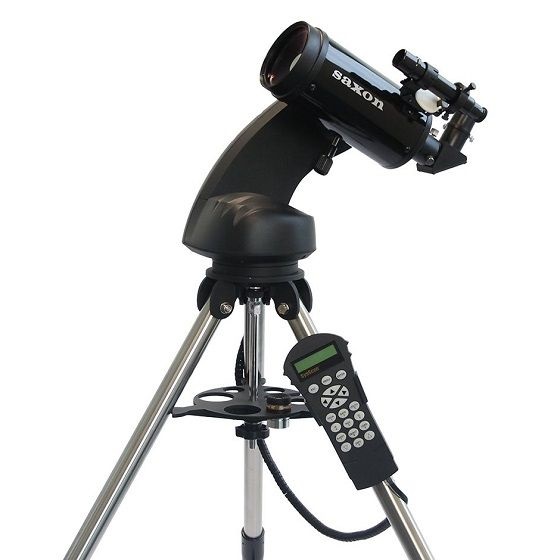
Saxon AstroSeeker 90/1250 Maksutov-Cassegrain Telescope (WiFi Enabled with Hand Controller)
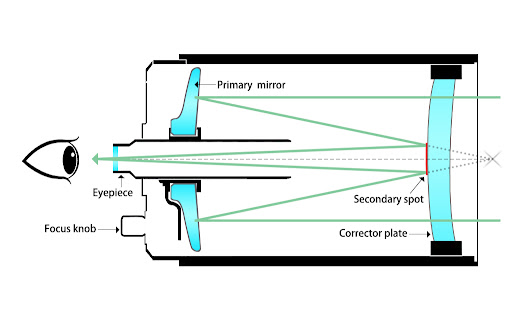
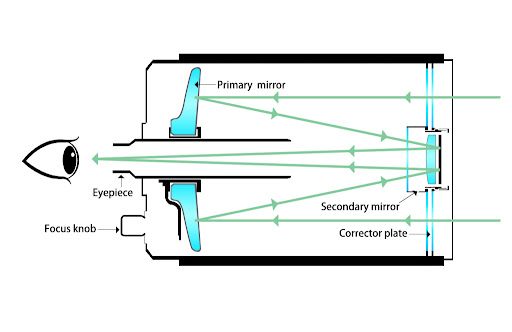
Now that you understand the basic types of telescopes available, here are the summaries of the advantages and disadvantages of each type of telescope with links to some models available for purchase in our store!
| Telescope Type | Advantages | Disadvantages | Examples |

|
Excellent for lunar, planetary, and binary stargazing especially with larger apertures. |
||
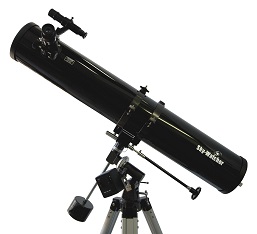
|
|||

|
| Land & Sky | Planetary | Deep Sky | All Rounder |
| Resolution & Portability | Easy | Intermediate | Advanced |
| Higher Resolution | 16" 406/1800 f/4.4 Colapsible Dobsonian | 16" 406/1800 f/4.4 Colapsible GoTo Dobsonian | 20" 508/2000 f/4 Colapsible GoTo Dobsonian |
| 16" 406/1800 f/4.4 Colapsible Dobsonian | 14" 355/1650 f/4.6 Colapsible Goto Dobsonian | 14" 356/3910 f/11 GoTo EQ Schmidt-Cassegrain | |
| 12" 305/1500 f/5 Dobsonian | 12" 305/1500 f/5 Colapsible GoTo Dobsonian | 300/1500 f/5 GoTo EQ Reflector | |
| 12" 305/1500 f/5 Colapsible Dobsonian | 10' 254/1200 f/4.7 Colapsible GoTo Dobsonian | 300/1200 f/4 GoTo EQ Reflector | |
| 10" 254/1200 f/4.7 Dobsonian | 8" 203/1200 f/6 Colapsible GoTo Dobsonian | 11" 280/2800 f/10 GoTo AZEQ Schmidt-Cassegrain | |
| 10' 254/1200 f/4.7 Colapsible Dobsonian | 200/1000 f/5 EQ Reflector | 11" 280/2800 f/10 GoTo EQ Schmidt-Cassegrain | |
| 8" 203/1200 f/6 Dobsonian | 150/750 f/5 EQ Reflector | 250/1200 f/4.8 GoTo EQ Reflector | |
| 8" 203/1200 f/6 Colapsible Dobsonian | 150/750 f/5 GoTo AZ Reflector | 250/1000 f/4 GoTo EQ Reflector | |
| 6" 150/1200 f/8 Dobsonian | 6" 150/750 f/5 Colapsible GoTo Dobsonian | 9.25" 235/2350 f/10 GoTo AZEQ Schmidt-Cassegrain | |
| 6" 150/750 f/5 Colapsible Dobsonian | 130/900 f/7 EQ Reflector | 9.25" 235/2350 f/10 GoTo EQ Schmidt-Cassegrain | |
| 6" 150/1500 f/10 AZ Schmidt-Cassegrain | 130/650 f/5 EQ Reflector | 200/1000 f/5 GoTo EQ Reflector | |
| 5" 130/650 f/5 Colapsible Dobsonian | 130/650 f/5 GoTo AZ Reflector | 200/800 f/4 GoTo EQ Reflector | |
| 5" 127/1250 f/10 AZ Schmidt-Cassegrain | 5" 130/650 f/5 GoTo Dobsonian | 8" 203/2032 f/10 GoTo AZEQ Schmidt-Cassegrain | |
| 127/1000(500) f/8 AZ Reflector | 5" 130/650 f/5 Colapsible GoTo Dobsonian | 8" 203/2032 f/10 GoTo EQ Schmidt-Cassegrain | |
| 120/600 f/5 AZ Refractor | 127/1500 f/12 GoTo AZ Mak-Cassegrain | 190/1000 f/5 GoTo EQ Mak-Newtonian Reflector | |
| 114/500 f/4.4 AZ Reflector | 127/1500 f/12 GoTo Mak-Dobsonian | 180/2700 f/15 GoTo EQ Mak-Cassegrain | |
| 102/660 f/6.5 AZ Refractor | 114/900 f/8 EQ Reflector | 150/1800 f/12 GoTo EQ Mak-Cassegrain | |
| 90/900 f/10 AZ Refractor | 114/1000(500) f/9 EQ Reflector | 6" 150/1500 f/10 GoTo AZEQ Schmidt-Cassegrain | |
| 80/900 f/11 AZ Refractor | 102/1000 f/10 EQ Refractor | 5" 125/1250 f/10 GoTo AZEQ Schmidt-Cassegrain | |
| 80/800 f/10 AZ Refractor | 102/1300 f/13 GoTo Mak-Cassegrain | 127/952 f/7.5 GoTo EQ Refractor | |
| 80/400 f/5 AZ Refractor | 100/900 f/9 EQ Refractor | 120/900 f/7.5 GoTo EQ Refractor | |
| 76/700 f/9 AZ Reflector | 90/900 f/10 EQ Refractor | 102/1000 f/10 GoTo EQ Refractor | |
| 76/300 f/4 Mini Dobsonian | 90/900 f/10 GoTo AZ Refractor | 102/714 f/7 GoTo EQ Refractor | |
| 70/900 f/13 AZ Refractor | 90/1250 f/14 EQ Mak-Cassegrain | 100/900 f/9 GoTo EQ Refractor | |
| 70/700 f/10 AZ Refractor | 90/1250 f/14 GoTo AZ Mak-Cassegrain | 80/600 f/7.5 GoTo EQ Refractor | |
| 70/500 f/7 AZ Refractor | 90/1250 f/14 GoTo Mak-Dobsonian | ||
| 70/400 f/6 AZ Travel Refractor | 70/900 f/13 EQ Refractor | ||
| 60/700 f/12 AZ Refractor | |||
| More Portable | 50/600 f/12 AZ Refractor |
The advances made in telescope manufacturing technology have made astronomy more accessible to the public. There has never been a better time than now to kickstart your astronomy journey with various brands offering competitive prices and advanced models, equipped with state-of-the-art technologies. Just remember to get your telescopes from reputable dealers. Or better yet, just buy from us for your telescope needs!
